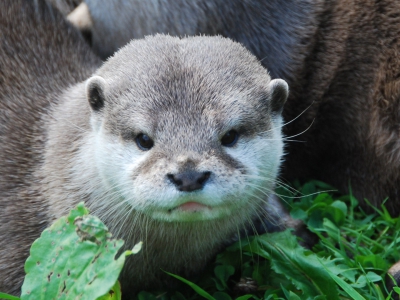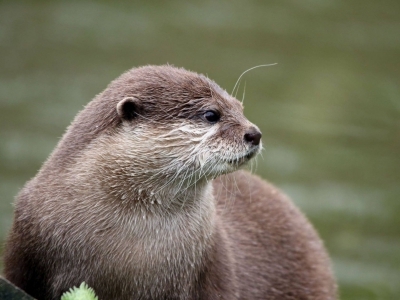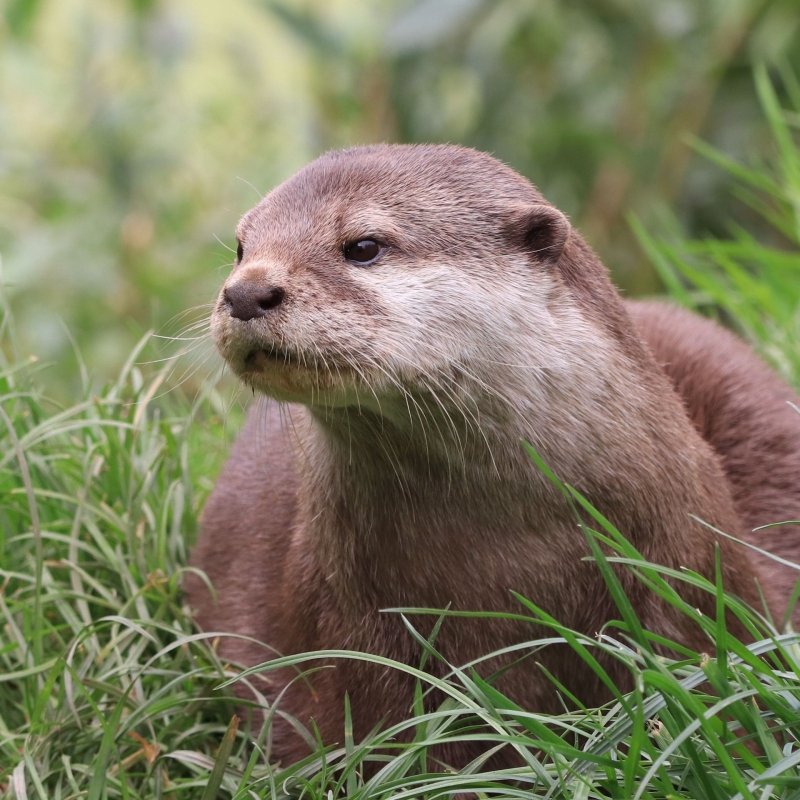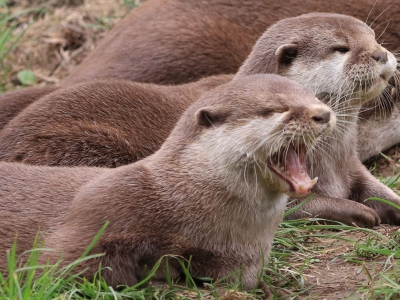Oriental small-clawed otter Aonyx cinereus
Animals in our sanctuary
Sopheary (female)

Sopheary came from a bankrupt zoo in Germany.
Tuyen (Male)

Tuyen joined De Zonnegloed in 2016. There was no room for him anywhere else.
Appearance:
The Asian small-clawed otter, also known as the "dwarf otter," is the smallest otter species in the world. Its fur is predominantly brown with a lighter shade on the belly, while the snout, throat, and chest have white markings. Unlike many other otter species, its paws have only partially webbed toes, giving it greater agility when foraging on land. With its strong jaws and sharp teeth, it can easily crack open shells, mussels, and crabs.
Behavior:
Asian small-clawed otters live alone or in small family groups, usually consisting of up to 12 individuals. They are known for their playful nature and spend much of their time swimming, playing, and basking in the sun. They communicate using a variety of vocalizations and scent markings, defining their territory with urine, feces, and secretions from a gland near their tail.
Diet:
These otters are true carnivores and primarily feed on:
- Crabs
- Shellfish
- Fish
- Water birds
- Frogs
They use their sensitive front paws to locate prey in the mud or under rocks.
Habitat and Distribution:
The Asian small-clawed otter inhabits wetland areas across Southeast Asia. It is found along rivers, in swamps, and coastal regions, where it digs burrows in riverbanks or takes over abandoned dens of other animals. Although this otter depends heavily on water, it also spends a significant amount of time on land.
Reproduction:
This otter species forms monogamous pairs that stay together for life. After a gestation period of approximately two months, one to six pups are born. At birth, they are blind and entirely dependent on their parents; their eyes open after about 40 days. Both parents actively participate in the care and upbringing of the young.
Conservation Status:
The Asian small-clawed otter is classified as "Vulnerable" due to habitat loss and water pollution. Additionally, illegal hunting and the exotic pet trade pose a significant threat to the species.
Adopt this Oriental small-clawed otter




.jpg)
